Tag: Championing ecological research
Chester Zoo has teamed up with Everton in the Community to raise vital funds for Act for Wildlife and the Gashaka Biodiversity Project (GBP).
Chester Zoo has joined forces with Everton FC’s official charity, Everton in the Community, to raise money for our Gashaka Biodiversity Project. The partnership will see both charities work close together to further develop the Gashaka Biodiversity Project, its outreach and the work it does to save wildlife habitats in Nigeria’s largest National Park.
 Gashaka Gumti National Park
Gashaka Gumti National Park
This collaboration and fundraising campaign, named Balls to Extinction, is a ground-breaking partnership. And throughout summer, a team will be at Chester Zoo selling Balls to Extinction scratch cards to raise money for the project.
 At Everton FC: Ian Snodin (retired Everton player), Dr Umar Buba (GBP Project Manager), Michael Salla (Health and Wellbeing Manager at Everton in the Community) and Scott Wilson (Head of Field Conservation at Chester Zoo)
At Everton FC: Ian Snodin (retired Everton player), Dr Umar Buba (GBP Project Manager), Michael Salla (Health and Wellbeing Manager at Everton in the Community) and Scott Wilson (Head of Field Conservation at Chester Zoo)
The money raised will go directly towards fighting to save the Gashaka Gumti National Park and its wildlife from threats such as encroachment and poaching.
On top of fundraising activities, Everton in the Community will help us to organise two football tournaments in Nigeria, which will provide us with a great opportunity to engage with local communities and raise awareness of conservation, health and wellbeing.
Scott Wilson, head of field conservation at Chester Zoo, explains:
“Engaging communities is so often an essential element for conservation success. This is particularly true in Gashaka Gumti National Park and this is a fantastic opportunity to work alongside Everton FC to use football as a means to deliver important health and conservation messages.”
 Local communities in Gashaka
Local communities in Gashaka
Football is an international language and a popular activity in Nigeria, which makes the two football tournaments a fantastic chance to communicate with the local people.
At each football event we will provide short educational films around the importance of looking after Gashaka Gumti National Park, as well as providing the local people with more information on how they can stay safe and look after their health and wellbeing. A mobile vaccination unit will be there too, providing free vital vaccinations against disease and a health care handbook written for African communities will be presented to the village elders.
Working closely with the local communities
The Gashaka Biodiversity Project also provides employment and training for the local communities and works closely with the National Park Service assisting in contributing to the infrastructure, resources and skills required to effectively manage this important habitat.
Local communities are vital in helping control any illegal activities and making sure the forests are protected. Dr Umar Buba, project manager of the Gashaka Biodiversity Project, explains in more detail:
“Most of the illegal activities that always attract local people into the forest is in search of a better living. So if everybody has something to do to make a living from they will no longer concentrate on the forest. We have immigrants from neighbouring states that come to destroy our ecosystem in the form of hunting, they cannot do that on their own; they have to involve someone from the local communities to be able to be successful in the forest as it is very dense. If you don’t know the area you could go in and never come out again!
“If the standard of living for the local people is improved then there will be less pressure on the natural resources.
“There is a lot of improvement in the community because of the coming of the Gashaka Biodiversity Project, and with that the illegal activities that the communities were fond of – such as going into the forest to hunt for animals, fishing, removal of parts of trees for herbal reasons, and so on – has reduced. They are becoming aware of the importance of the natural resources to them.”
 Dr Umar Buba (GBP Project Manager) with Michael Salla (Health and Wellbeing Manager at Everton in the Community)
Dr Umar Buba (GBP Project Manager) with Michael Salla (Health and Wellbeing Manager at Everton in the Community)
The average life expectancy of those living in Gashaka is around 40 years old, infant mortality is high and education is low. The Balls to Extinction campaign will help provide development aid to communities and by doing so it will reinforce the conservation messages and engage communities to support the project’s conservation activities.
We’ve got another video to share with you from our Gashaka Biodiversity Project in Nigeria. The the video below shows just a handful of the amazing wildlife that lives within Nigeria’s largest National Park: Gashaka Gumti.
The project is working hard to save the wide variety of habitats and the large populations of many species lost throughout the rest of the region.
Can you identify all of the animals on the video? Discover more about them below (in order of appearance on the video)…
Genet
Genets are highly agile nocturnal predators found in forests and savannahs across Africa. Whilst they look like cats genets are actually more closely related to mongooses. Genets are highly adaptable and often take up residence in tourist lodges where they can take advantage of easily available food and some people even keep genets as pets.
Melanistic golden cat
There are usually no prizes for guessing what colour golden cats are. But in Nigeria our camera traps captured a video of this rare melanistic golden cat. Melanistic animals have an abundance of melanin, the same pigment that makes human skin darker when we get a sun tan. Melanism is found in many animals but is probably best known in jaguars and leopards, which are called black panthers. In The Jungle Book Bagheera is a melanistic leopard.
Putty nosed monkey
These are some of the smallest monkeys in Africa and often hang out with other species for protection against predators. Like some other species of monkey they have a complex system of calls with different “words” for each predator. The word for leopard is described as “pyow” whilst the word for eagle is described as “hack”.
Monitor lizard
There are over 73 species of monitor lizard found across the world. The Komodo dragon is the largest species of monitor alive today and can grow to 3m long, but in Australia the bones of a monitor lizard which could grow to be 7m long have been discovered.
Red flanked duiker
The red flanked duiker is one of the smallest species of antelope and is found across sub-Saharan Africa. They are heavily hunted for food and large numbers can be found in markets where they are sold as bushmeat.
Red river hog
Red river hogs are highly secretive wild pigs that live in forests, usually near rivers, lakes or swamps. They hide during the day and emerge at night to feed. They can live in groups of up to 60 animals, usually females and young led by a dominant boar. We have 3 red river hogs at Chester Zoo who live near the entrance to our Tropical House.
Our Gashaka Biodiversity Project is working to save wildlife habitats in Nigeria’s largest National Park: Gashaka Gumti National Park. It is home to a wide variety of habitats, including extensive forests, and is one of West Africa’s last wildernesses. The park is an extremely important biodiversity area, containing large populations of many species lost throughout the rest of the region.
The below video showcases just some of the amazing wildlife that lives within the forest – wildlife the project aims to protect. The footage was captured on camera traps which have been set up in different areas of the National Park to learn more about the habitat and the diverse fauna and flora living within it.
Learn more about the animals our project is working to save. In the above video you can see (in order of appearance)…
Aardvark
Aardvark are found throughout Sub-Saharan Africa. Their name means “earth pig” in Afrikaans because they use their large powerful claws for digging up ants and termites for dinner and for digging burrows where they rest and give birth. We have two aardvark at Chester Zoo, Tatsu and Himba, who can be found (probably asleep) near the wild dogs.
Baboon
Olive baboons are large monkeys found right across Africa. They communicate using a range of vocalisations and facial expressions including grinning, lip smacking, eyebrow waggling, teeth grinding, yawning and sticking their tongue out!
Blue Duiker
Blue duiker are small antelope found in Central and Southern Africa. Their name comes from the Dutch word for diver due to their habit of diving through bushes to escape predators. Whilst we don’t have blue duiker at Chester Zoo we do have some red forest duiker in our Secret World of the Okapi exhibit.
Pangolin
Pangolins are the only mammals with a suit of scales made from keratin, the same stuff as your hair and nails! Their name means “something which rolls up” in Malayan and when they are attacked they do just that to form an armoured ball. Pangolins use their long claws to climb trees and their long tongues to feed on ants and termites. Some pangolin tongues can be 40cm long!
Brush-tailed Porcupine
The brush-tailed porcupine is one of Africa’s largest rodents and lives in small family groups in forests across the continent. When threatened the porcupine will rattle its quills and stamp its feet to scare an attacker off. Brush-tailed porcupine are heavily hunted for food in many parts of Africa.
Bushbuck
Bushbuck are the most widely distributed African antelope and are found in both forests and savannahs. Big game hunters consider bushbuck to be the most dangerous antelope because of their habit of hiding in bushes and impaling the hunter with their 50cm horns when he gets close.
Buffalo
Congo buffalo are the smallest subspecies of buffalo found in Africa. They live in small herds in the forests of West and Central Africa. Unlike their Savannah cousins, Congo buffalo’s horns point backwards, this stops them getting tangled in trees and bushes as they walk through the forest. We have a herd of seven buffalo at Chester Zoo, including some very cute calves!
Chester Zoo has been supporting conservation work in Gashaka Gumti National Park, Nigeria, since 1994. The park is a biodiversity hot-spot, and is the home to a huge variety of wonderfully diverse wildlife, including probably the last viable population of the Nigeria-Cameroon chimpanzee sub-species.
The main focus in the past has been on the apes in the area through the Gashaka Primate Project which was founded in 2000, but we have recently taken over the co-ordination of the project under the new title Gashaka Biodiversity Project (GBP). And we are in the process of setting up a Non-Government Organisation (NGO) called ‘Chester Zoo Foundation Nigeria’.
 Gashaka Primate Project protecting Nigeria-Cameroon chimpanzee sub-species – approximately only 1000 left in the wild
Gashaka Primate Project protecting Nigeria-Cameroon chimpanzee sub-species – approximately only 1000 left in the wild
The Gashaka Biodiversity Project will now expand and look more broadly at all of the wonderful species living in this habitat.
We are thrilled to be taking the lead on a project such as this, protecting a vast ecosystem with such a wide range of species. We will continue to work hard to protect it!
Chester Zoo has been working alongside national and international partners fighting to save the park and its wildlife from threats such as encroachment, fires and poaching.
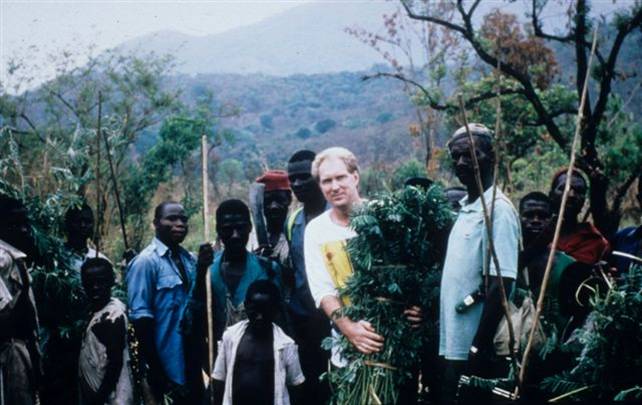 Our former director general, Gordon Reid, on Chester Zoo’s first expedition to Nigeria in 1994
Our former director general, Gordon Reid, on Chester Zoo’s first expedition to Nigeria in 1994
Main aims of the project
The Gashaka Biodiversity Project aims to protect the forest and the diverse fauna and flora living within it. We are looking forward to getting involved in the conservation work on the ground as well as further research which will contribute to our current understanding of Gashaka Gumti, the park management and the deterring of illegal activities.
We will work closely with the local communities within Gashaka, providing employment and training. Our field assistants are all from local communities and are crucial to the day to day running of the project. They are vital in helping control any illegal activities and making sure the forests are protected.

On top of building relationships we aim to carry out plenty of research as we still don’t know the extent of what wonderful animals are living in this habitat! And it’s a large area too – covering nearly 7000km2!

What’s next?
First things first! We need help in setting up our project headquarters in Serti, which is the nearest town to the park.
We have always worked closely with the National Park Service and are building our new headquarters close to their office in Gashaka Gumti so we can continue our close collaboration.
 Plot of land in Serti for Gashaka Biodiversity Project HQ
Plot of land in Serti for Gashaka Biodiversity Project HQ
Our new HQ will enable us to expand our work and make a real difference to the park and communities that live around it. As well as the project HQ we will be helping the National Park Service to develop the infrastructure in Gashaka Gumti to support tourism, communications and anti-poaching patrols. And on top of the building developments we will need to provide kit, equipment and resources for the visitor centre.
More about the park & the history of the project…
-571x381.jpg)
Gahsaka Gumti National Park is located in southeast Nigeria on the border with Cameroon and is the largest National Park in Nigeria. The main entrance to the park is Serti which is a 12 hour drive from the airport!
It was gazetted as a National Park in 1991, with the help of early pioneer Richard Barnwell, who has worked for many years with the World Wide Fund for Nature. He first arrived at Gashaka Gumti in 1972 working hard to establish the game reserves and employ anti-poaching measures.
The main objective of the park was to protect Nigeria’s varied ecosystems which were being threatened by encroachment and poaching. By 1978 there were 80 fully trained and equipped game guards, and it was well on its way to becoming a first class game reserve.
However, after he left in 1979, the following five years saw changes in senior staff and dwindling government funding meant that the reserves went into decline and poaching became prevalent again and wildlife population began to decline.
In 1991 the Nigerian Conservation Foundation alongside Richard (who was working for WWF by this time) worked to implement a new infrastructure which saw the recovery and restoration of Gashaka Gumti. It was declared a National Park that same year!
Madagascar is renowned for its incredible biodiversity-a unique part of the world where evolution has generated amazing creatures. But its uniqueness is no protection against the threats facing our planet’s animal and plant life. In fact-the island’s individuality can make it even more vulnerable to disease and climate change. That’s why urgent action is needed now to ensure we conserve Madagascar’s increasingly fragile eco-system.
Earlier this year our curator of lower vertebrates and invertebrates-Gerardo Garcia-visited this-the world’s fourth largest island-off the coast of Africa in the Indian Ocean. This is his report:
When you work in conservation-the statistics relating to percentages of threatened species within the areas you focus on are important. In many cases they reinforce arguments justifying the need for certain actions to be taken. They can also provide the evidence needed to secure funding for key conservation projects. But at times statistics can be heart-breaking-and highlight the enormous scale of threats facing endangered species.
The case of Madagascar is a prime example: it is home to at least 400 frog species-but to safeguard their survival good planning and focus is essential. Otherwise it’s possible to become overwhelmed by the difficulties facing these species and the question of where to start helping them?
Last January I went to Madagascar for several weeks to further our work building the foundations of an amphibian conservation programme in partnership with the local Non-Governmnet Organisation (NGO) – Magasikara Voakajy.
Our first focus was the golden mantella frog (Mantella aurantiaca) which is under serious threat-making it one of the key species we have concentrated our conservation efforts on in this region. Its habitat is home to a remarkable diversity of other animals and plants-but this shared habitat is at serious risk of destruction and degradation-much of it as a result of man-made local development schemes. The golden mantella frog has also suffered through the international pet trade market-being heavily collected due to its striking bright orange colour.
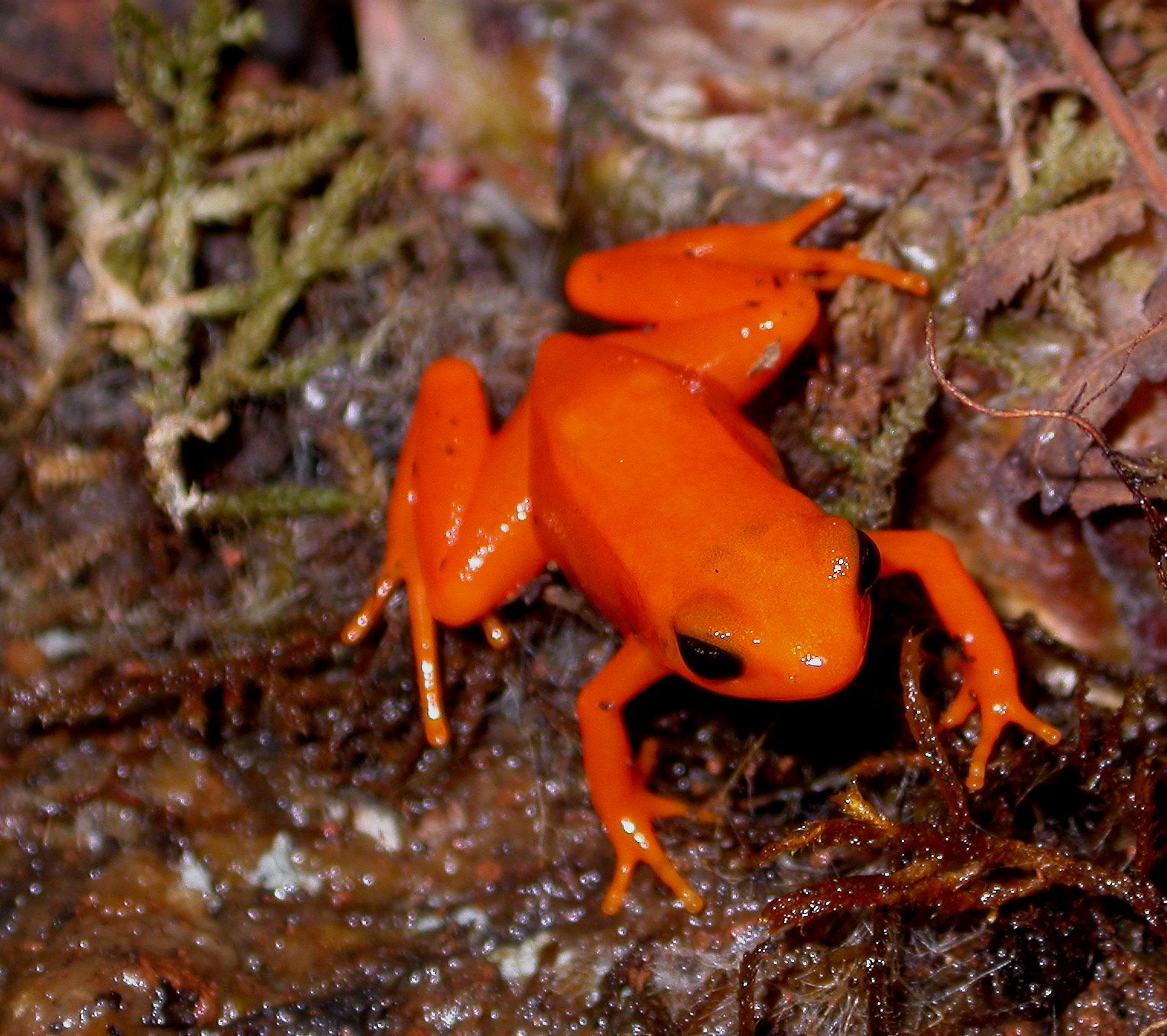
A workshop with all stakeholders on this species was held in Mantadia Andasibe National Park to discuss how to reintroduce captive-bred frogs into the wild. The process is complex; it involves studies of suitability of habitat-health screenings-estimation of population sizes in ponds-and a complete ecological study of wild populations to provide us with the information needed to arrange good management of the breeding colonies.
Such studies are essential and often lead to trial releases and further pilot studies before any full release of captive bred frogs can be undertaken in the wild. At the same time it is necessary to manage captive colonies to ensure they do not loose genetic diversity over generations. Support for the programme from local communities is vital for the success of future releases to ensure any human exploitation of the environment’s natural resources does not conflict with the long term conservation strategy.
As a result such projects inevitably take a great deal of time. Nevertheless our workshop was very productive and good guidelines have been drafted for the long term survival plan for the species. Madagascar hasn’t started any reintroduction programme of amphibians yet. But with the recent detection of chytrid fungus in the country-a strategy involving an emergency response to prepare for the lethal impacts of the disease is now required.
Of utmost importance is a strategy to house species in captive assurance colonies and that is one of the reasons why our zoo is constantly developing its breeding skills for amphibians and husbandry techniques.
The planet has just over 7,000 known species of amphibians with 40 different breeding strategies-so there is a lot to learn. We also need to more effectively protect and manage critical regions and build up healthy in-country frog populations. This can only be done via the co-operation-commitment and dedication of alliance partners and passionate individuals around the world.
To help us get nearer to our goal-during my visit-we ran a practical workshop on identification and marking techniques of amphibians. This and various other techniques for photo identification and individual tagging were presented to 20 Malagasy amphibian workers at the facilities of Mitsinjo.
We also met Molly Bletz-one of the frontline researchers for finding alternative strategies to protect amphibians. Her work is supported by Chester Zoo.
In addition we visited the area of Mangabe-where our conservation efforts for the golden mantella frog species have long been concentrated and where-last year-we had to respond to an urgent call to protect some of the frog’s breeding areas from the effects of illegal mining. The impact has been catastrophic and it will take many years before the frogs will return there to breed. But it is not too late.
The work with the communities has been reinforced and there are already signs of restoration helped by the eradication of invasive plants which had been colonizing affected ponds.
Visiting this site afforded us an exclusive opportunity to further discover the region’s rich diversity of wildlife. There are as many species active during the night as there are in the day and I found myself not wanting to go to bed for fear of missing them.
We saw everything from the smallest chameleon to the endangered large tree-dwelling lemur-the Indri-whose call is so special that I count it as one of my best wildlife experiences ever! It is a mix of loud meows and laments which echo eerily early in the morning even as the mists of the night still enshroud the entire forest; impossible to forget.
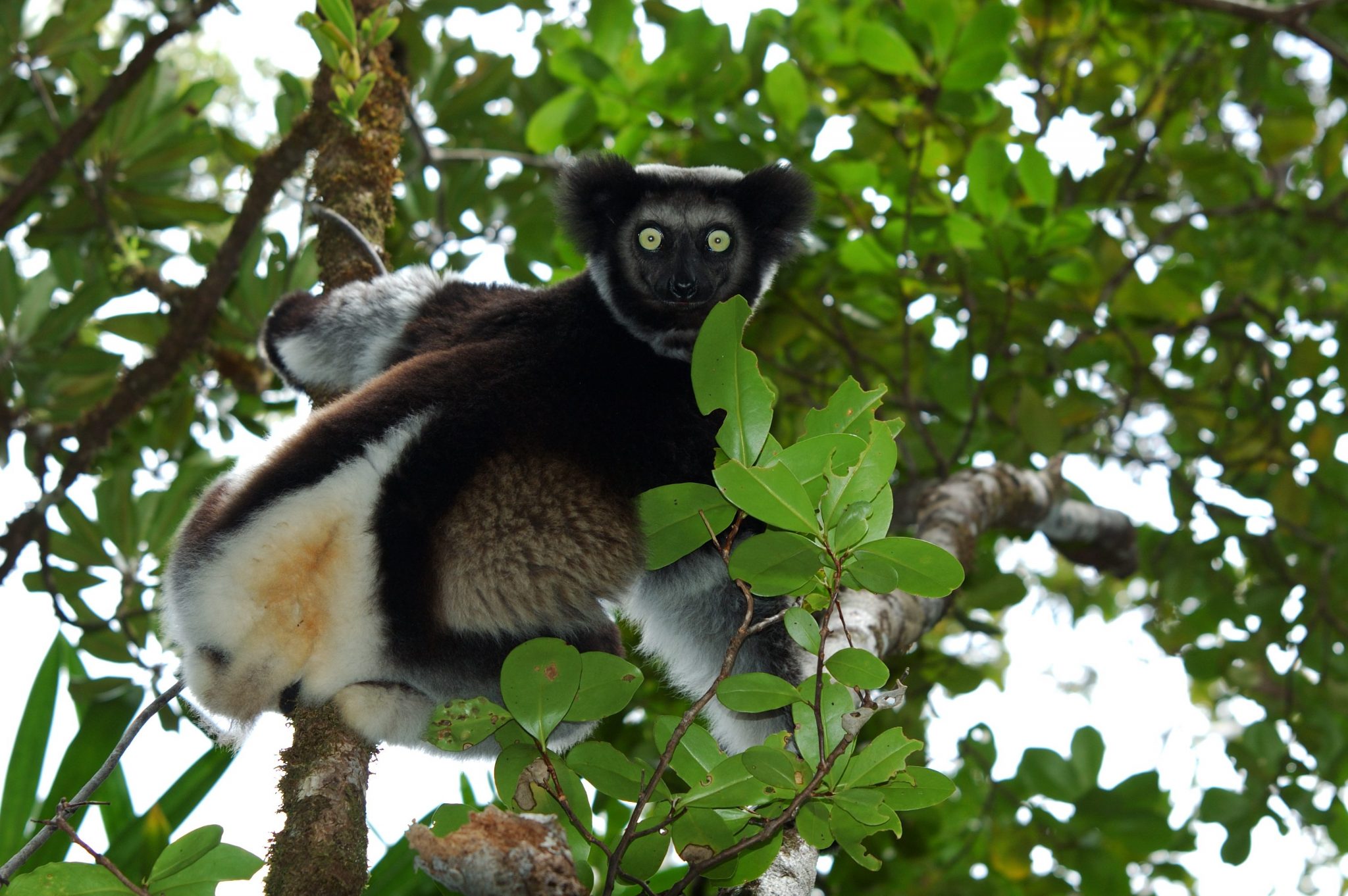
Whilst in Mangabe-we also explored the possibility of starting a project with another species of frog living in the same habitat as the golden mantella; the Grandidier’s Madagascar frog-locally named Radaka-about which we have very little knowledge. Its forest habitat is diminishing due to human
activities including illegal gold mining. It is also commonly eaten by local communities and could easily become extinct in many areas.
The third objective we focused on was the highly endangered Harlequin mantilla. The need to establish captive-bred populations was highlighted as in some locations-such as Antoetra-the species is in a very fragile status in the wild.
These little frogs-of not more than 3cm long-are characterised by black skin with red or orange bands on limbs-and black undersides with dark blue spots. The beautiful combination of colours makes each frog unique-allowing easy identification for ecological studies. They hide out of human sight most of the day-probably to avoid direct sun exposure. We left the site with the satisfaction of having seen one of the rarest frogs in Madagascar but also full of concern about its future survival.
A new Amphibian Conservation Strategy for the Amphibians of Madagascar (ACSAM II) is planned to be developed this year. Surely this golden mantella model of working with local communities-partnership with strong local NGOs-and developing exciting research projects to set up a strategy to house species in captive assurance-will be a great reference.
Now back at Chester-as part of our wonderful Amphibian Area in the Tropical Realm here at our zoo this summer a large terrarium will feature a colony of golden mantella frogs. Each time I hear their clicking call between the leaves I close my eyes and remember the magnificent call of the Indri in the canopy.
I hope to return to Madagascar soon.
Camera traps set up by our project in Nigeria have captured rare footage of the elusive African golden cat attacking a pangolin in the Gashaka Gumti National Park, home to our Nigeria project.
It is the first time Africa’s golden cat has been caught on camera in the area.
Scott Wilson, our head of field conservation, said:
“The golden cat is the least known of Africa’s felids, so any additional information and footage of it is exciting. Camera traps can tend to take a lot of video with nothing on… so when a rare species turns up it is always exciting – when they are exhibiting interesting behaviours, doubly so!”
The video shows the cat pouncing on the pangolin, a long-tailed mammal covered in scaly armoured plates. You can see the pangolin reacting defensively and curling up into a ball to try and protect itself.
We use camera traps such as these in remote areas to learn more about the species living in the habitat. The footage adds to the limited understanding of the golden cat, clearly showing that pangolin may be prey.
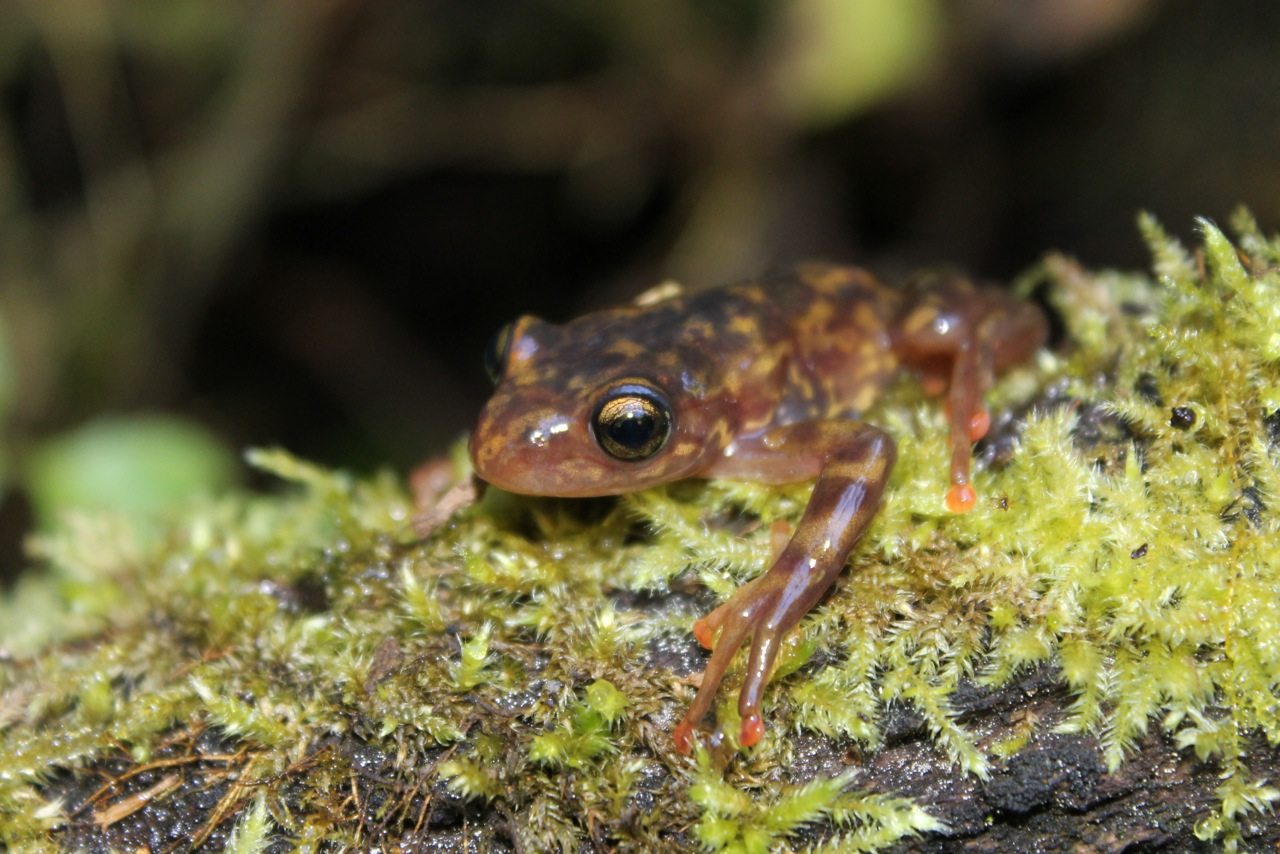
My name is Molly Bletz-and I am a research associate at James Madison University in Harrisonburg-Virginia USA-where I am collaborating with Dr. Reid Harris on a plan to mitigate the lethal amphibian disease chytridiomycosis. In the summer-I will begin doctoral studies on Malagasy amphibians’ skin microbes with Dr. Miguel Vences at the Technische Universität Braunschweig in Germany.
Amphibians are threatened by the fungal disease chytridiomycosis-which has already killed frogs around the world. This disease is caused by the pathogenic skin fungus, Batrachochytrium dendrobatidis (Bd)-and is the largest disease threat to biodiversity at the present time.

In Central America-species like the Panamanian Golden Frog can no longer be found in the wild because of Bd-and about half of Panamanian species in the uplands are extinct or are greatly reduced in number due to Bd.
Bd is currently absent from the island of Madagascar-but this pathogen will likely arrive at any time. Madagascar is a biodiversity hotspot-home to over 400 species of frogs. The map to the left shows the areas where Bd will thrive in red-which is also where most of the frogs live (Lötters et al. 2011).
Bd has spread rapidly around the world-so we predict that it is only a matter of time before the pathogen reaches Madagascar where it will likely decimate the diverse frog fauna. It is imperative to consider a prevention and mitigation strategy now in order to prevent catastrophic declines and extinctions in Madagascar like those seen in other tropical areas.
People consume yogurt to maintain and restore good bacteria-which protect us from disease-and the same principle works for frogs. Amphibian skin harbours many bacterial species. Some of these bacteria are beneficial and can inhibit the lethal chytrid fungus. The addition of locally-occurring protective bacteria to amphibians has effectively prevented disease in our laboratory experiments and in a recent field trial in the USA-which was conducted by our collaborators.
We plan to proactively find effective anti-Bd probiotics in order to implement probiotic conservation strategies to curb the devastation of Bd if it arrives in Madagascar and help preserve the remarkable amphibian biodiversity on the island.
Funding from the Chester Zoo is very important to the success of this project and is allowing me to travel in Madagascar in January and February-2014 to sample frogs in the wet season for potential probiotics. This trip is a follow up to the dry-season trip made by Reid-me and others in August and September-2013.

We brought back bacterial samples to James Madison University from 480 individuals divided among 67 frog species. We are starting to test these isolates for their ability to kill Bd-and some good candidate probiotics are showing up.
While on this first trip-we were able to sample one of the rarest frogs species in Madagascar-Boophis williamsi. Note its beautiful orange toes! This species will need protection from Bd if and when it arrives.
Scott Wilson, conservation officer at Chester Zoo tells us a little bit more about the Nigeria project and how we are Acting for Wildlife there. The forests of Nigeria support an amazing diversity of other animals and plants, many of which are found nowhere else in Nigeria – or the world. That’s why we’re working with the Gashaka Primate Project and the Nigerian Montane Forest Project to protect the remaining forests and with them their precious wildlife. Below he tells us more.
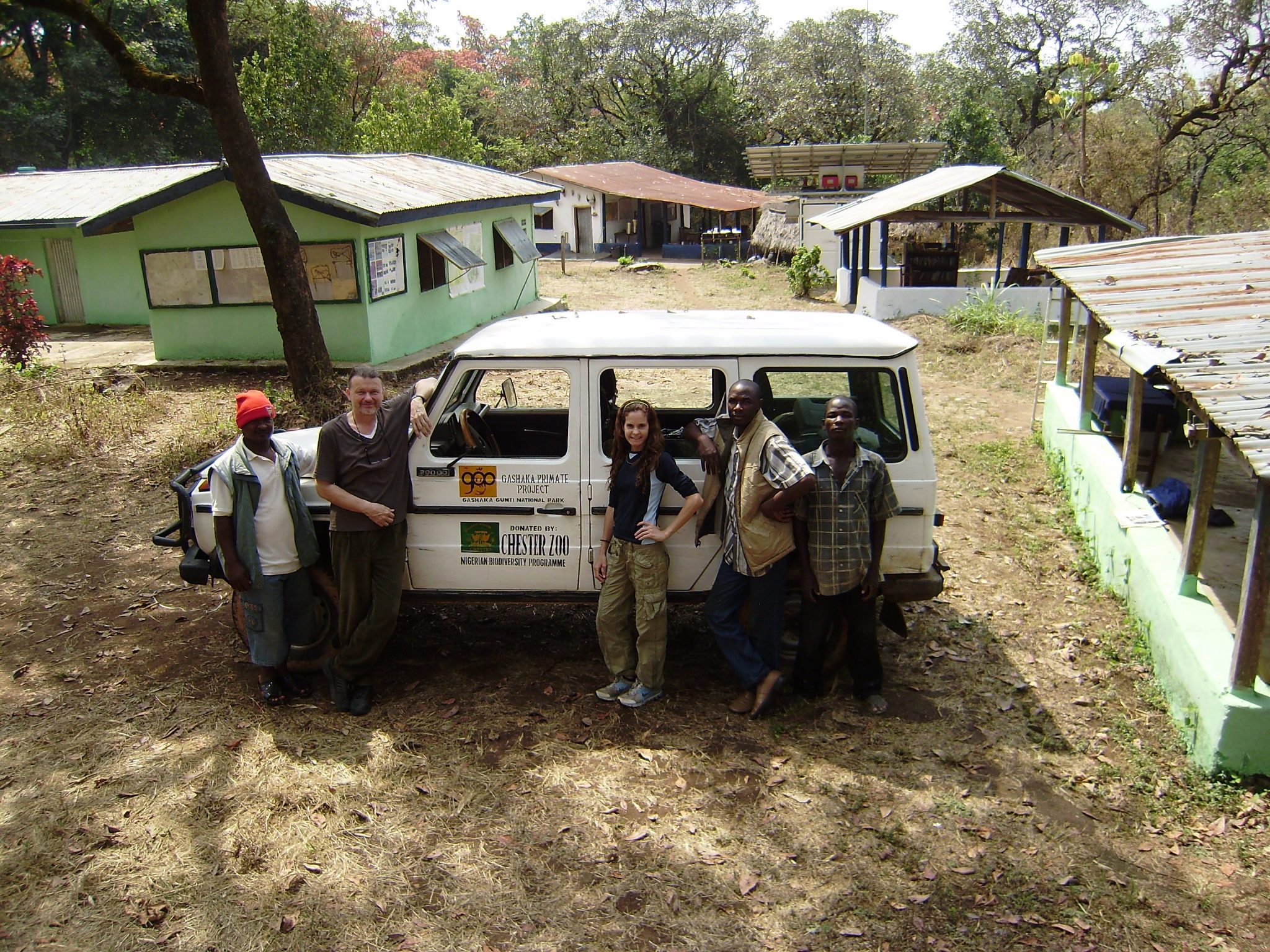
“Research activity plays a large part in the protection of Gashaka Gumti National Park (GGNP) and its wildlife. Each year several students from Nigeria and British universities (and also other international students) visit the park to conduct research. Currently most, but not all, research is focussed on the chimpanzees or the two habituated groups of baboons. An impressive amount of undergraduate and postgraduate publications have resulted from studies at GGNP.
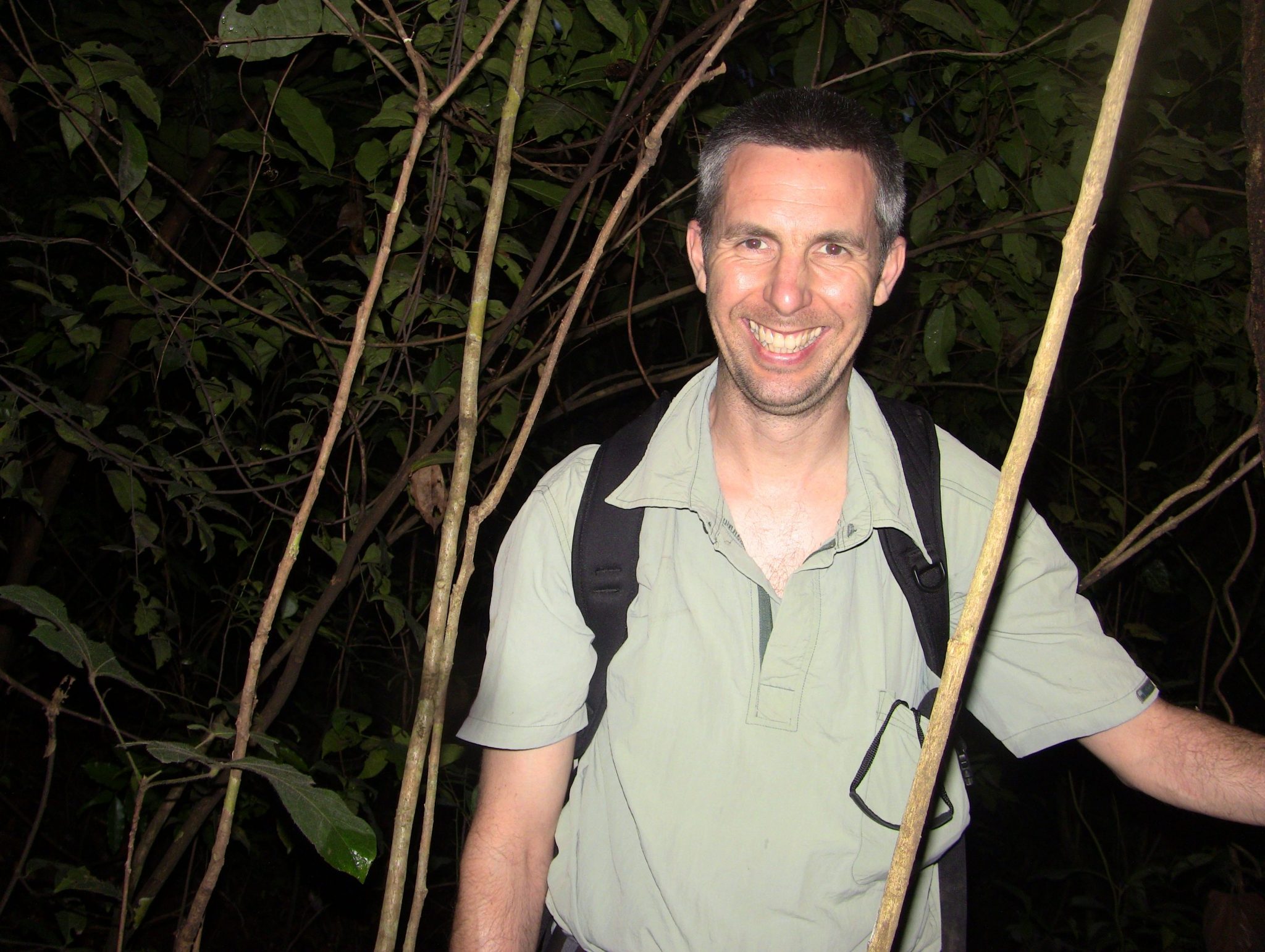
“The presence of researchers all year around, plus the local field staff who assist with the studies, has proven to effectively keeps poachers away and deters other illegal activities within the study areas. To conduct research in such a remote location however, you need a research base – the Kwano Field Station.
“Built on the site of an old village that used to exist within the park, the name Kwano is a local term – which I was expecting to be something exotic like ‘place of beauty’ or ‘heart of the forest’ – but actually means ‘tin roof’!
“The camp comprises of a kitchen, an office and storage area, rooms to accommodate the visitors and staff, and some under cover areas for general resting, meeting and eating. As field camps go it is very well equipped – there is a solar heated shower and of course some latrines, There is a river close by for water, and the biggest luxury is electricity. This is supplied by a state of the art solar and hydro unit.
“Of course a field station in the middle of the forest tends to have ‘additional’ guests! The habituated baboon troop that strolls past most days. The bat-eating snake living in the kitchen roof (probably Boiga blandingii for those interested). And the scorpion in the bedroom…
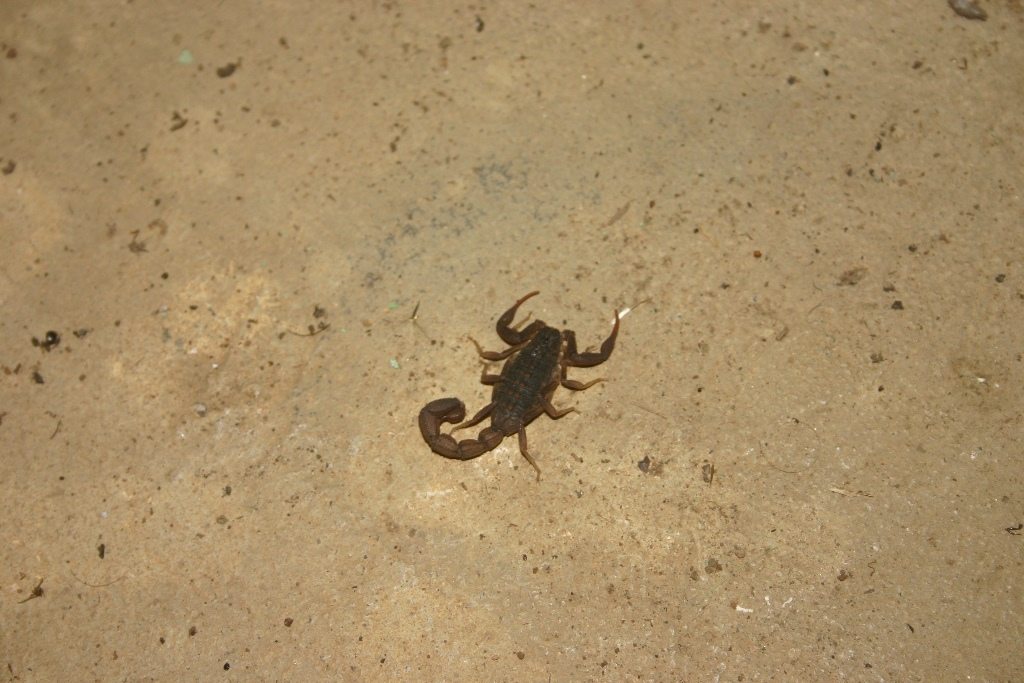
“Gashaka Gumti National Park is well known for its healthy populations of primates – most of which have vanished from the rest of the region as forests have been destroyed. The park’s best known primates are probably the chimpanzees, and Gashaka Gumti National Park is home to probably the last viable population of the Nigerian-Cameroon Chimpanzee subspecies.”
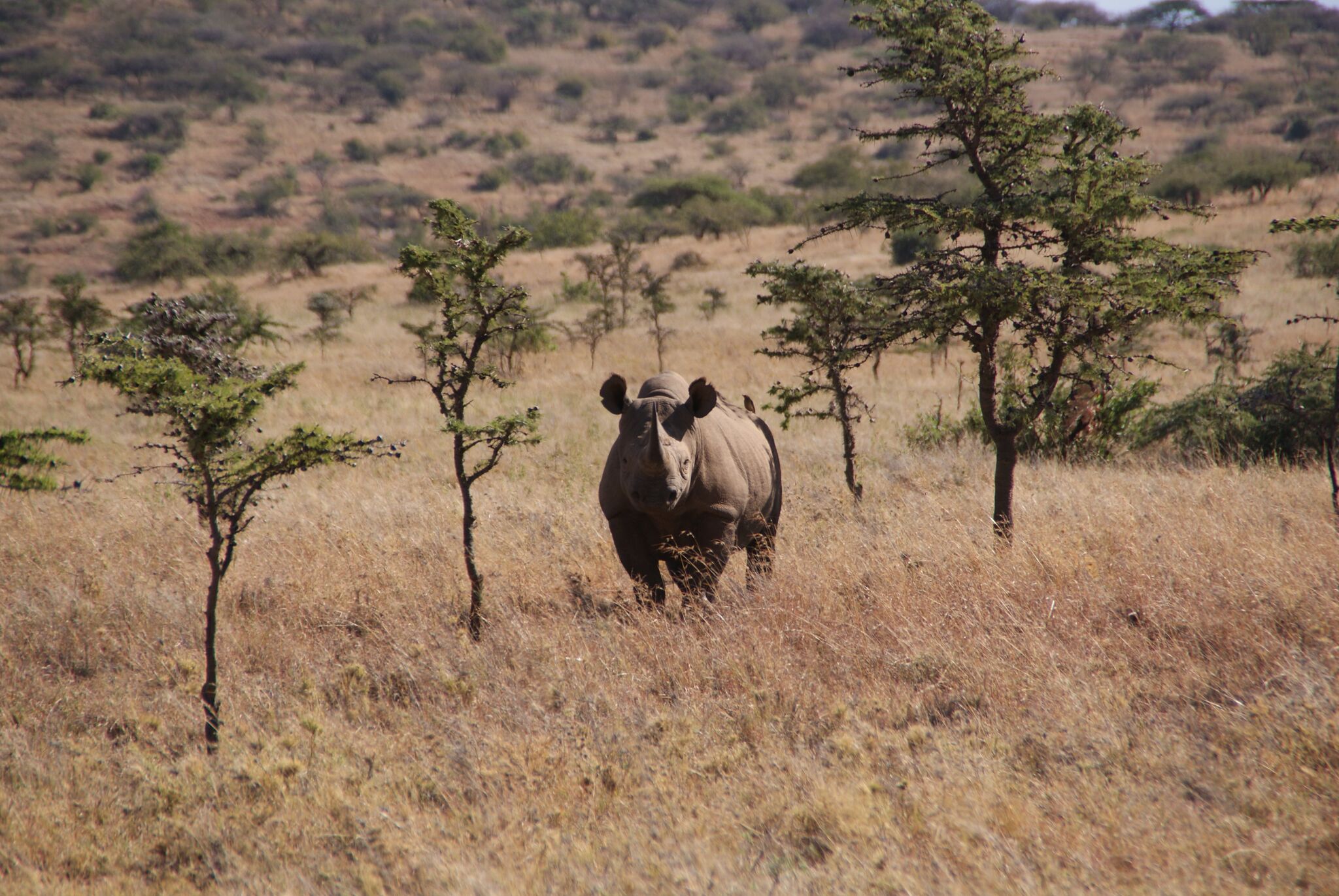
Donate to our conservation work in Africa
In June 2013 Act for Wildlife celebrated its second birthday, but Chester Zoo has been working with a variety of conservation projects all over the world for many years.
The zoo’s first involvement with conservation in Gashaka Gumti National Park began in 1994 when Gordon Reid (then Chief Curator, and later to become the zoo’s Director) teamed up with WWF to conduct fish surveys in the area.
 Gordon Reid on the first expedition to Nigeria in 1994
Gordon Reid on the first expedition to Nigeria in 1994
At this time WWF and the Nigerian Conservation Foundation (NCF) were the organisations working in the park and who, working alongside the government’s National Parks Service, had pioneered the early conservation work which began in the 1970s.
Gordon was followed by other zoo staff over the next few years, many studying the chimpanzees of Gashaka, but it was not until 1999 that the Gashaka Primate Project (GPP), and the major involvement of Chester Zoo and Volker Sommer (of University College London and founder of the GPP), began.
Scott Wilson is the latest member of the zoo staff to become involved in our conservation work in Nigeria. Last year we brought you a video of his trip to see Chimpanzees in Gashaka. On his latest visit Scott called in to the National Park Service offices in Gashaka and was pleased to find early fish samples, from the embryonic days of the project, still surviving – nearly 20 years on!
There is a strong and firm commitment by the European Association of Zoo and Aquaria (EAZA) to support conservation programmes in Madagascar and Chester Zoo is keen to take a key role being active in amphibian conservation in the island.
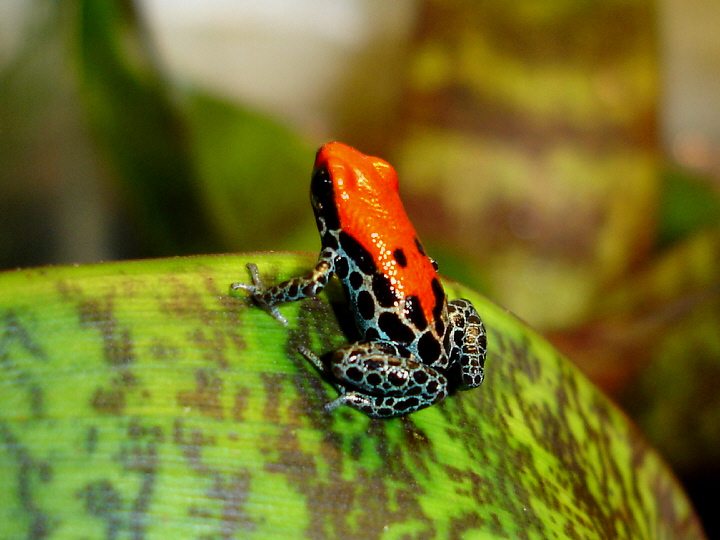
This is going to be part of our global conservation plan for Amphibian Conservation here at Chester Zoo as one of our Field Programmes.
The approach to Amphibian Conservation will be multi-faceted and capacity building in terms of training is essential to start seeing in-country initiatives develop in the medium/long term. From this course we hope to start seeing colleagues who will champion species programmes in the country who will implement the knowledge of the species in captivity and how to react to an eventual outbreak of chytrid or a catastrophe such as the loss of habitat.
But the experience of keeping Malagasy amphibians in the zoo world is pretty modest. Surprisingly-the interest in Malagasy colorful frogs is very high but sadly there is very little known regarding keeping and breeding them.
During the development of the A Conservation Strategy for the Amphibians of Madagascar (ACSAM; http://www.sahonagasy.org/acsam) there was an analysis of the current knowledge on keeping amphibians and only half a dozen were regularly bred for several generations… we only have another 285 species to learn how to breed…
The approach to gaining the knowledge regarding breeding all these species is by classifying them according to their different breeding strategies and extrapolating the knowledge of breeding one of them for the rest of the group.
Twelve different breeding strategies have been defined which would incorporate the diversity of Malagasy amphibians. The first step would involve the most highly threatened species for each of the breeding strategies – to bring them into captivity to learn how to keep them but in almost all cases this would be impossible.
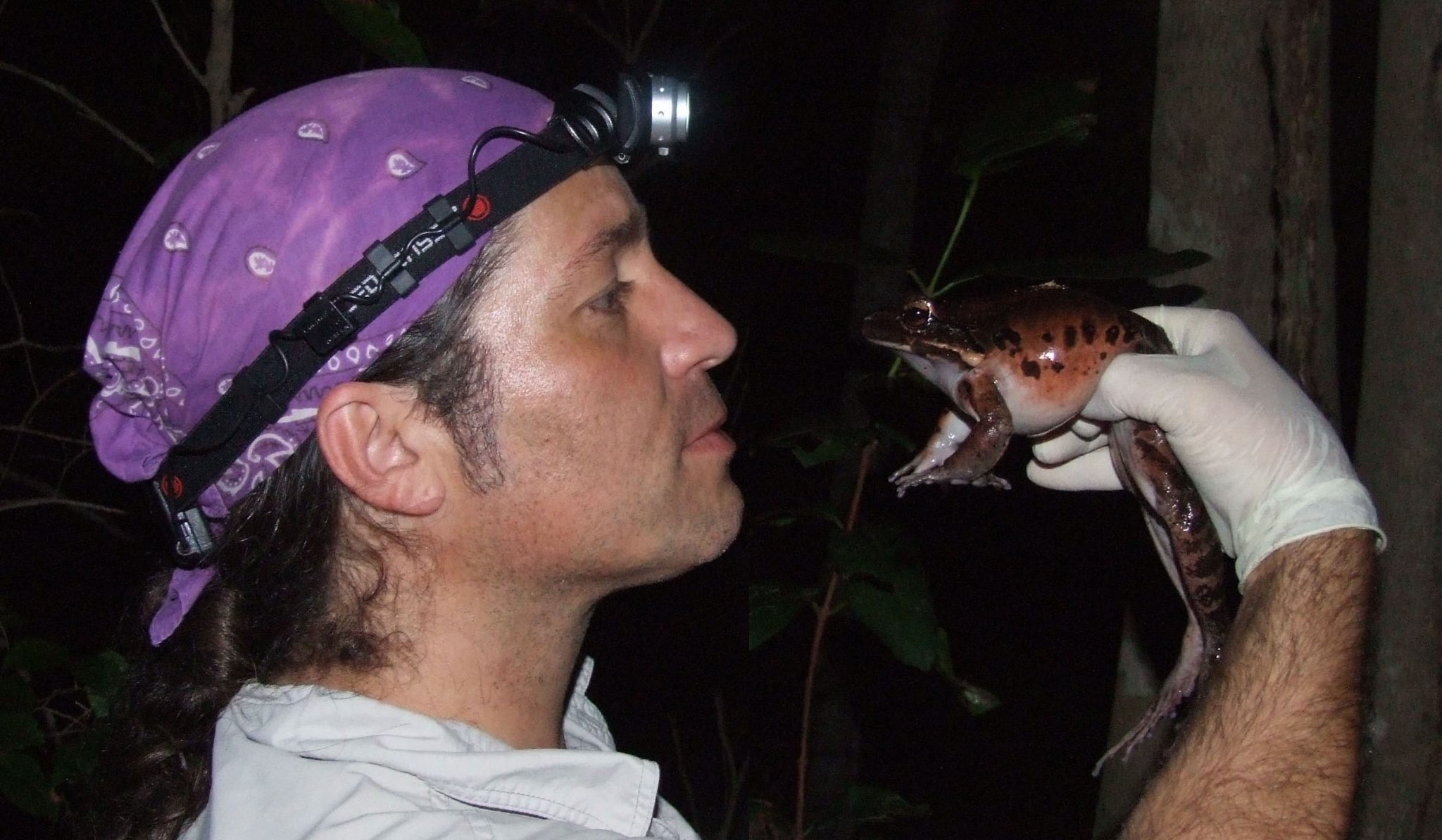
We will not have enough founders and we cannot take the risk of losing individuals during this period. So the plan will be to bring in alternative-named analogues-close species having a similar breeding strategy. These are going to be the candidates for the next breeding programmes after the course.